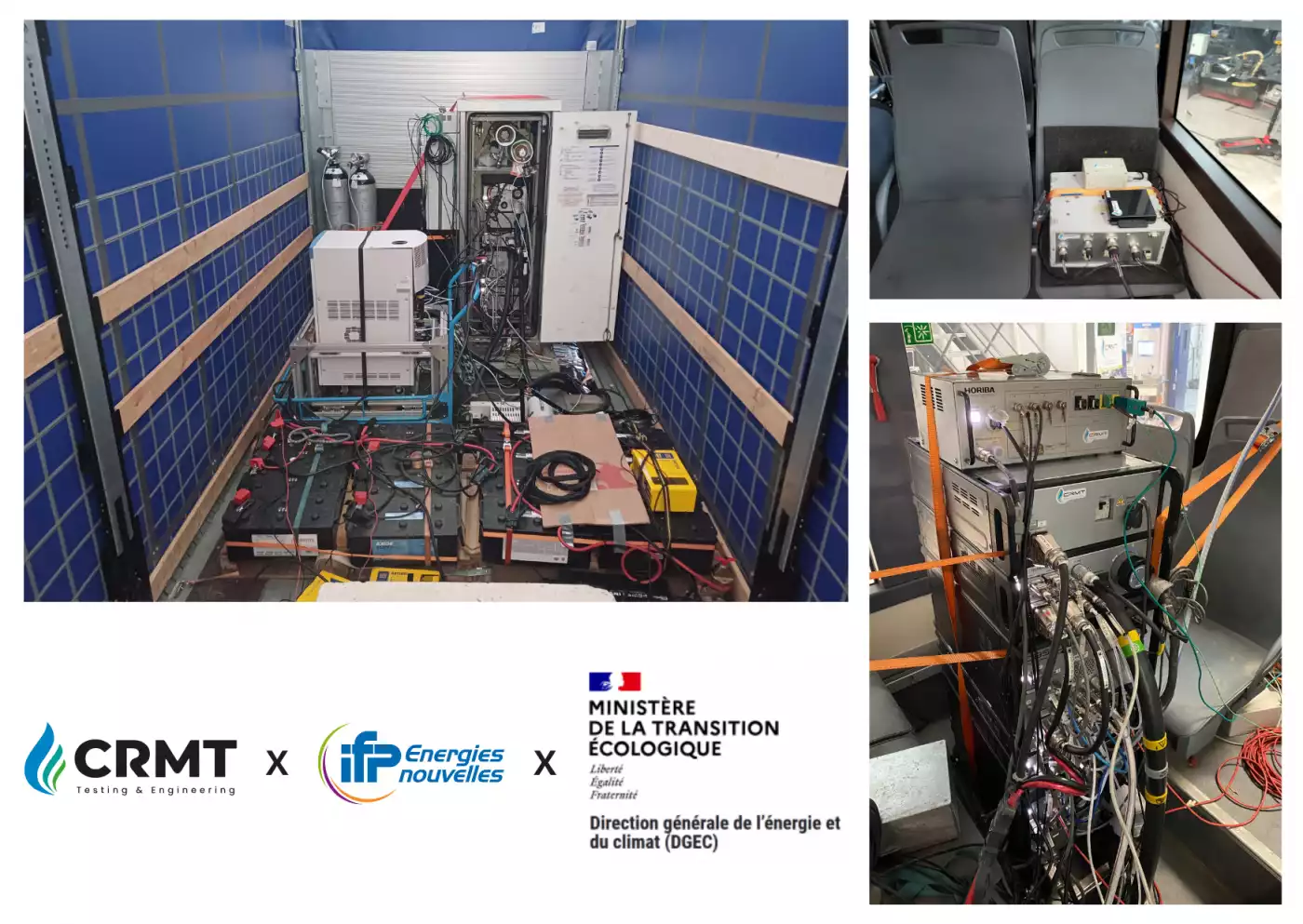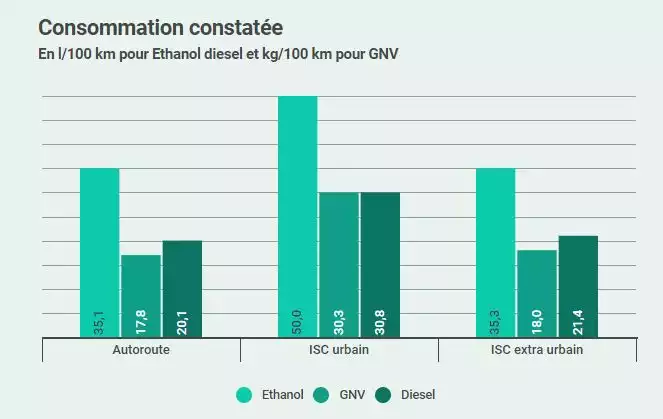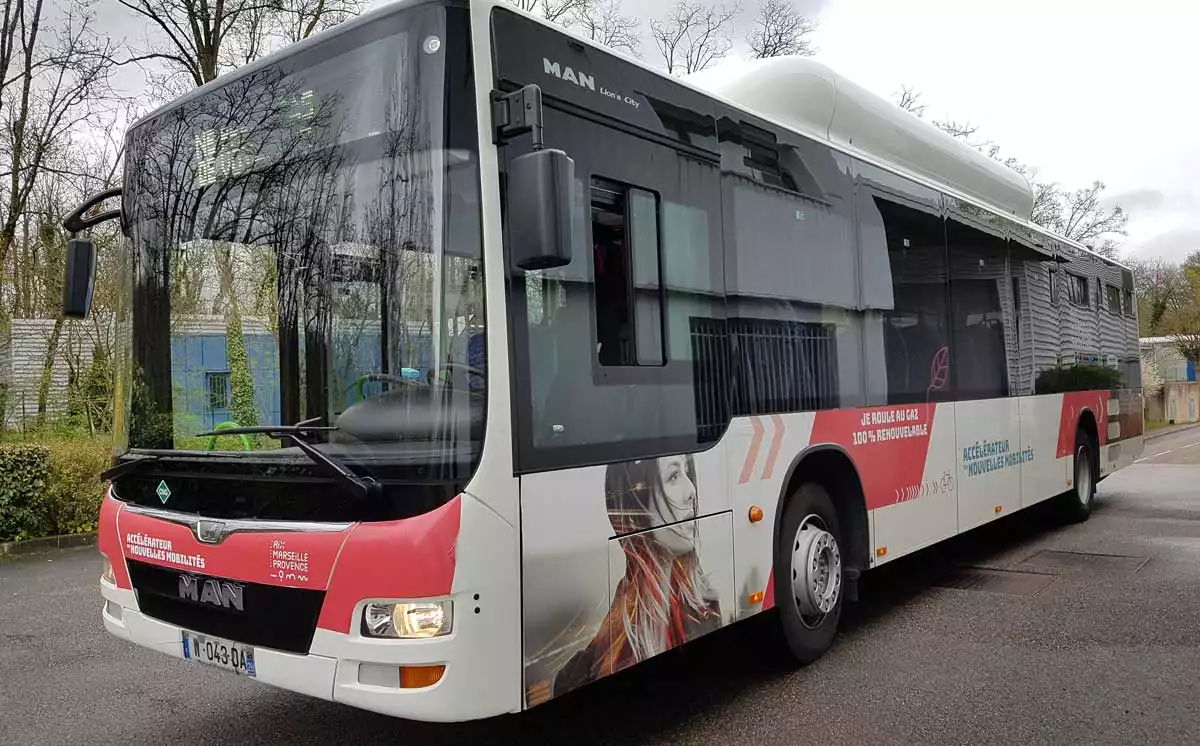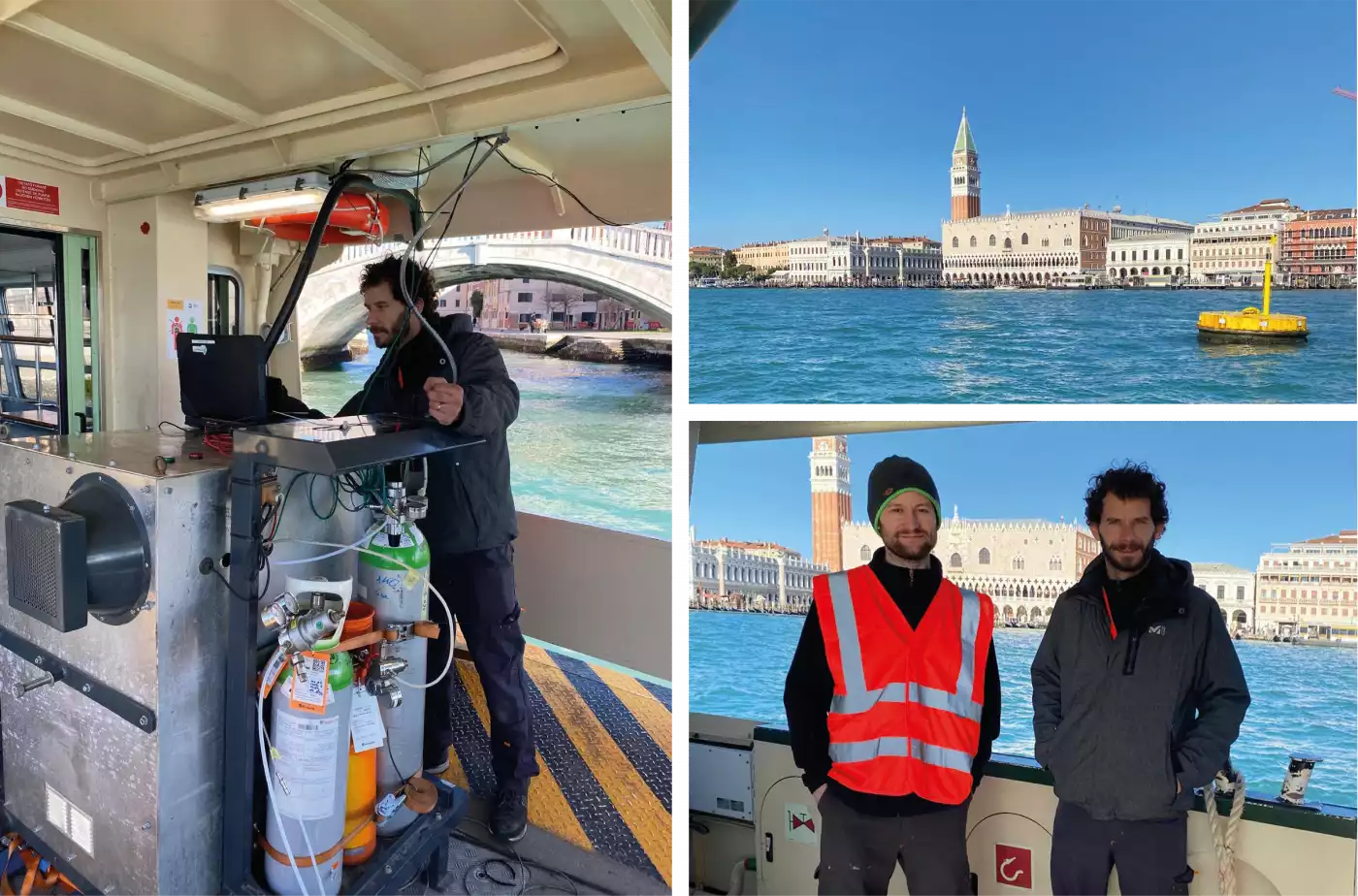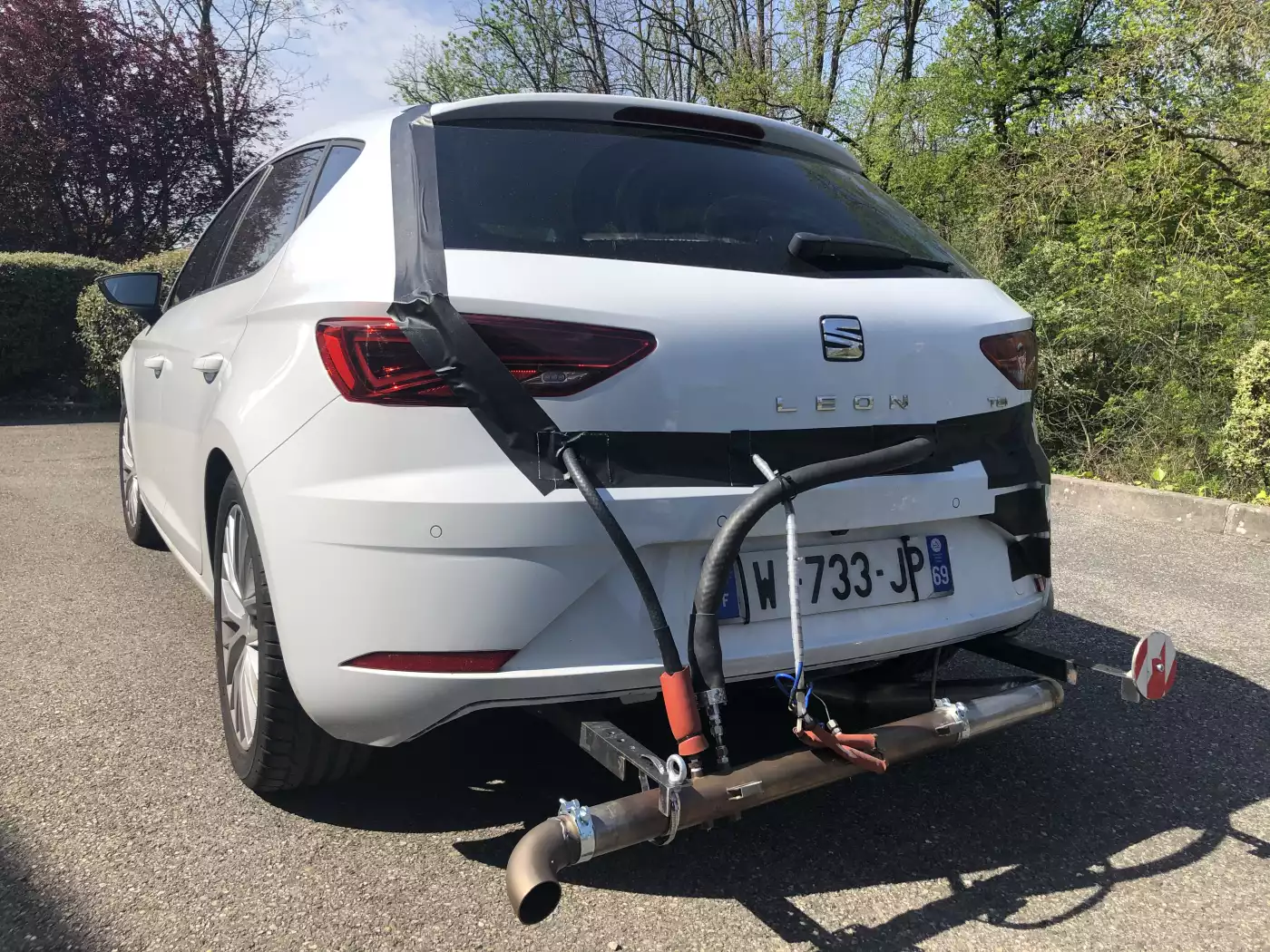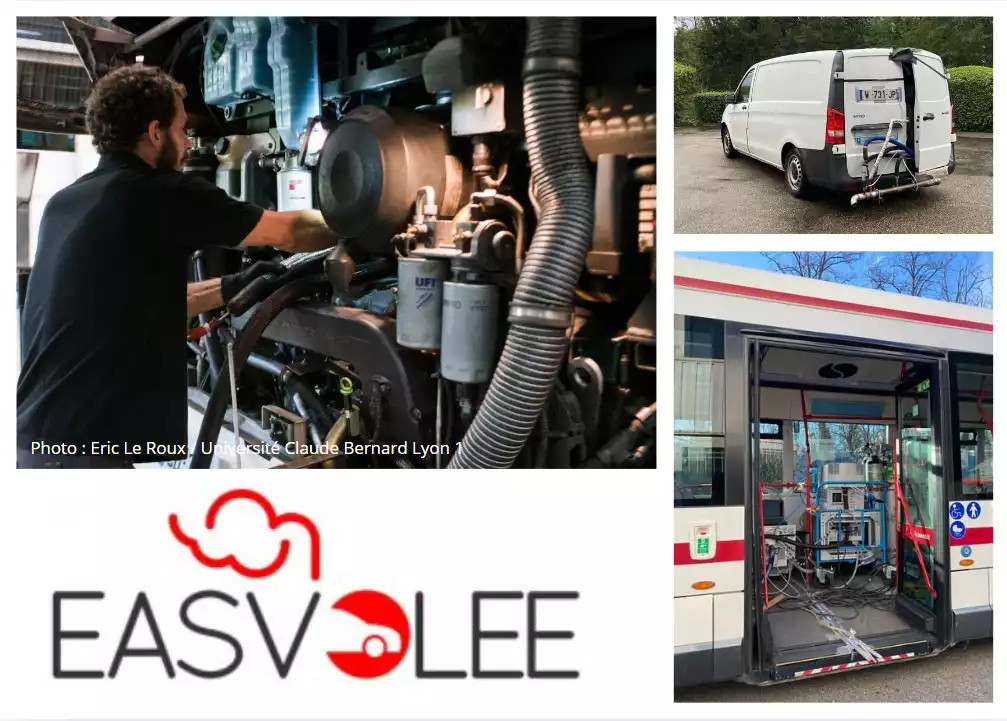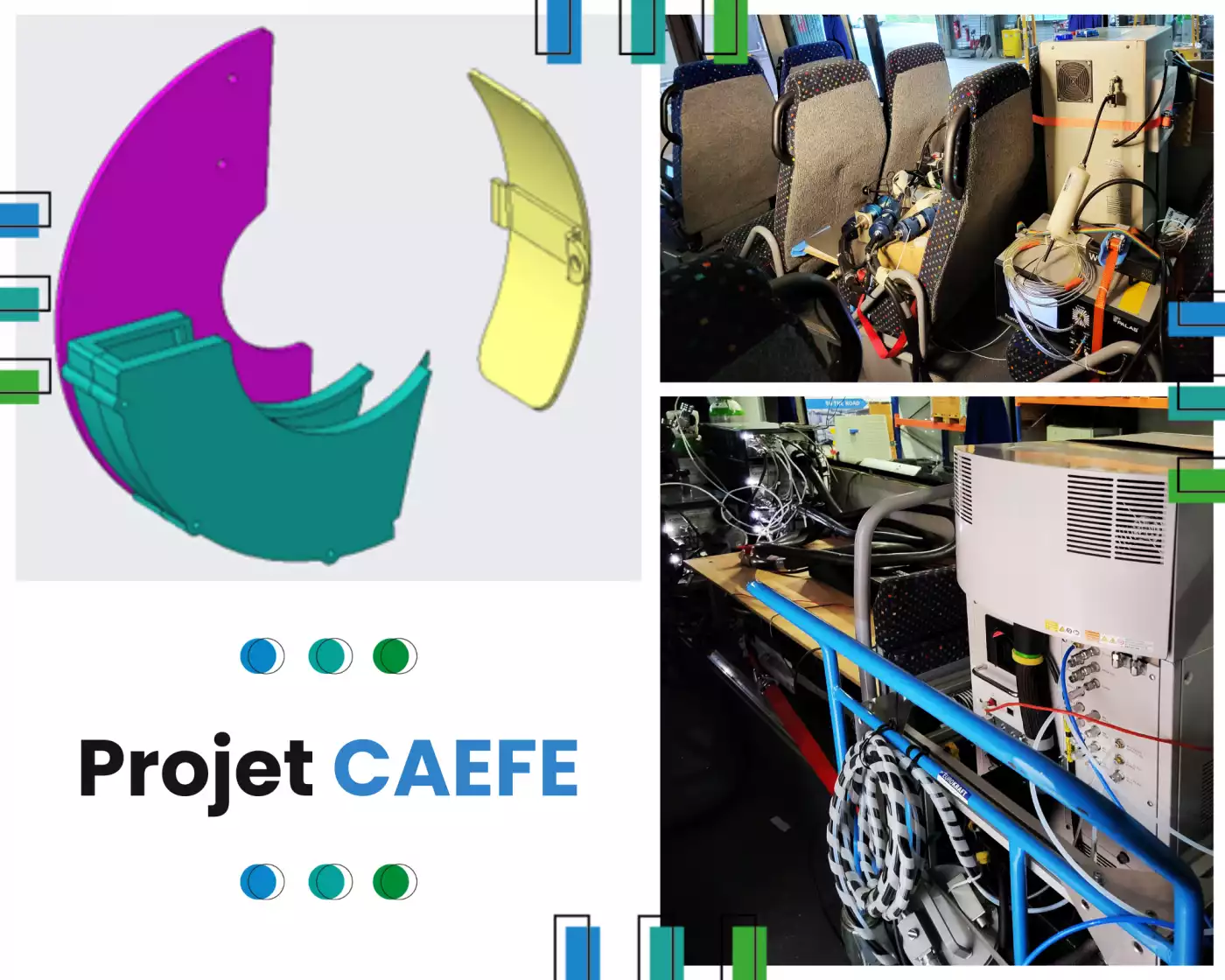Number of vehicles tested: 10
Types of powertrains: B7, B100, HVO, GTL, LNG, dual-fuel, hybrid
Pollutants measured: CO2, regulated pollutants (nitrogen oxides, fine particles, etc.),
unregulated pollutants (PN23nm, NO2, NH3, NH2, CH4)
Measurement methodologies: on-road testing under real-world operating conditions
using ISC-type and urban cycles / laboratory testing in climatic test cells
Project stakeholders: CRMT, IFPEN, Greenmot, Directorate General for Energy and
Climate (DGEC)
A study to understand pollutant emissions from heavy-duty vehicles in France
To provide an accurate representation of greenhouse gas and pollutant emissions from current heavy-duty vehicles in the French fleet, the Directorate General for Energy and Climate (DGEC) commissioned IFP Energies Nouvelles (IFPEN) to carry out a comprehensive evaluation.
This study aims to inform regulatory developments, particularly regarding the evolution from Euro VI to Euro 7 standards, as well as the Crit’Air classification system.
Thanks to its recognized expertise in the measurement of both regulated and unregulated pollutants, CRMT was selected to conduct on-road emissions testing under real operating conditions.
CRMT’s expertise in onboard emissions measurement at the heart of a nationwide study
As part of this study coordinated by IFPEN, CRMT played a central role:
• Selection of 10 representative vehicles from the French fleet (buses and trucks with different powertrains: B7, B100, LNG, HVO, etc.)
• Instrumentation of the vehicles using advanced measurement technologies, adapted to the specific constraints of each vehicle and measurement system.
Technologies included PEMS (Portable Emissions Measurement System), FTIR (Fourier Transform InfraRed), and SPCS (Solid Particle Counting System). A wide range of pollutants was measured, both regulated (CO, NO, NO2, etc.) and unregulated (formaldehyde, ammonia, N2O, HCN, etc.)
• On-road testing near CRMT’s Dardilly site, using real-world driving routes. The tests followed ISC (In-Service Conformity)-type cycles, including urban traffic conditions with frequent stops, congestion, and engine restarts—designed to reflect realistic operating conditions, including engine warm-up phases.
CRMT also coordinated and supervised additional laboratory tests performed in climatic test cells by Greenmot.
This comprehensive expertise enabled the collection of accurate and reliable data to
support evidence-based policymaking.
A strong partnership and technical complementarity with IFPEN and Greenmot
The on-road tests carried out by CRMT provided a real-world comparison to the controlled laboratory tests conducted by Greenmot.
This dual approach allowed for precise cross-analysis of:
- Real-world operating conditions (CRMT)
- Controlled environment testing with managed variations in temperature, humidity, and pressure (Greenmot)
The same driving cycles were replicated in the lab, providing a consistent reference to
assess deviations linked to real-world conditions.
All collected data was then analyzed by IFPEN to extract key insights on the full operating cycle of the vehicles.
Technical expertise serving the energy transition
By leveraging its experience in onboard measurement and real-world testing, CRMT made a key contribution to the success of this major campaign.
CRMT’s role in instrumentation, test execution, and coordination with technical partners reflects our ongoing commitment to supporting the energy transition with independence, precision, and scientific rigor.
To access the full report: etude_emissions_pl -IFPEN -rapport de synthese.pdf
